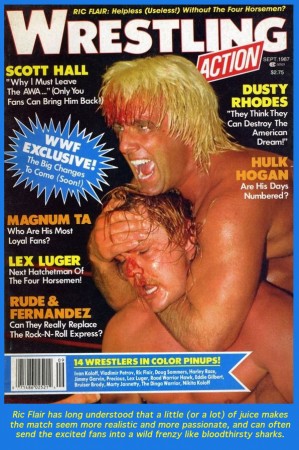 Last week, we analyzed the graphic, horrifying, exciting Pro Wrestling magazine covers that featured wrestlers with blood-soaked faces and bodies — which I refer to as a “Crimson Cover”. These covers were popular in the 1970’s to mid-80’s (before the potential of contracting AIDS through blood contact became fully understood).
Last week, we analyzed the graphic, horrifying, exciting Pro Wrestling magazine covers that featured wrestlers with blood-soaked faces and bodies — which I refer to as a “Crimson Cover”. These covers were popular in the 1970’s to mid-80’s (before the potential of contracting AIDS through blood contact became fully understood).
Why were these images of brutality — which most people would consider disgusting — so common (almost required) in the wrestling magazines at that time, and so popular among the fans? Are people just naturally sadistic and blood-thirsty?
Lets consider more of the reasons behind these unusual and profound photos of graphic, bloody agony.
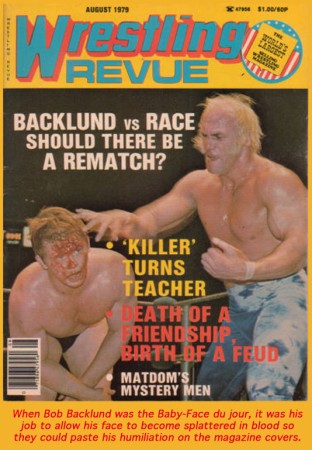 Scars Are Permanent
Scars Are Permanent
Blood in a match, busting open the victim’s face, increases the intensity of the violence because the damage is seen as permanent. Open cuts usually leave scars, forever marring the face. Therefore, the drama and “heat” of a violent feud could be amped up through bleeding foreheads, because they will never fully heal (so the injury is understood to be more profound.)
The effects of this brutality on the viewer is even more pronounced when the victim — the bleeding man — is young and pure. His beauty is destroyed and he is forever disfigured. The fight seems to be more important — the magazine more critical to purchase — if some “virgin” is getting his cherry popped.
 Law of the Jungle
Law of the Jungle
Another reason wrestling fans crave bloody images is because humans have evolved (somewhat) from animal roots, and plenty of our savage instincts are still very much intact. Bleeding flesh may disgust the more evolved, civilized parts of our brains, but bloodshed also appeals to our more savage animal instincts. Blood is natural.
We are part of a food chain, and everyone knows that the stronger consume the weaker. The bleeding jobber represents the helpless lamb, which we must admit (being animals ourselves) has a place near the bottom of the food chain. The Crimson Cover fulfills our expectation that predators will often draw blood.
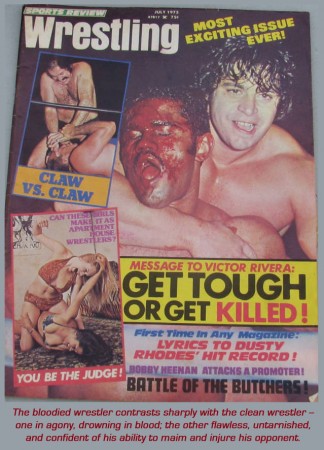 Greater Contrast
Greater Contrast
Pro wrestling tells a story through contrasts — the relative differences between two wrestlers in their appearances, philosophies, attitudes, and outcomes. By bloodying one wrestler — putting the shocking “Crimson Mask” on his face — while depicting his opponent as happily free of injury, clean, and unblemished, the apparent gulf between their outcomes is widened. A photo of a blood-soaked face juxtaposed with a flawless and confident face begs questions in our minds: What happened here? Why is one wrestler clearly in agony and the 0ther untouched? Isn’t such a mis-match rather unfair? I guess we will need to buy the magazine to find out…

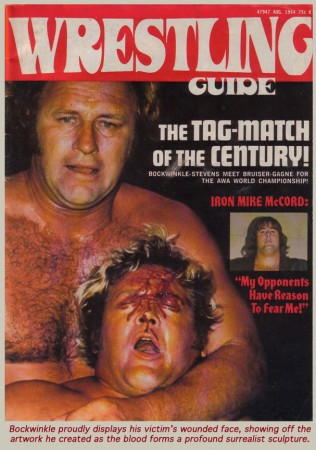 Religious Reference
Religious Reference
I believe that for Christians, the Crimson Cover refers to the ultimate sacrifice — the crowning of thorns and crucifixion — which is normally depicted as a bloodbath. Just as Jesus couldn’t wipe the relentless flow of blood off his face, so too is the exhausted wrestler too weak and overwhelmed to clean his face. Just as religious artwork inspires compassion by showing the savior’s face and body absolutely soaked in buckets of garish blood, so too does a Crimson Cover focus on the shocking red stain — using background colors and a tight focus to make the blood central to the story.
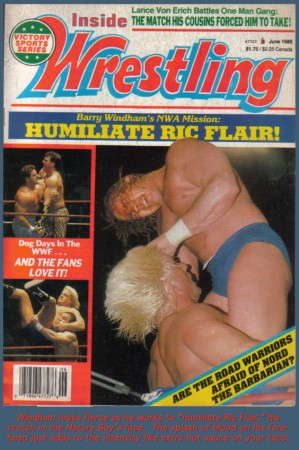 The implication of the Crimson Cover is that the Baby-Face is suffering for us, just like good old J.C. While Christ suffered for our sins — to cleanse us — the wrestling Baby-Face suffers for our enjoyment — to entertain us. Either way, the implication is that the Suffering is serving a purpose. We are made to feel that, once the blood begins to flow, we’re going to get somewhere (to Heaven, or to the championship belt, or to some state of ecstasy.)
The implication of the Crimson Cover is that the Baby-Face is suffering for us, just like good old J.C. While Christ suffered for our sins — to cleanse us — the wrestling Baby-Face suffers for our enjoyment — to entertain us. Either way, the implication is that the Suffering is serving a purpose. We are made to feel that, once the blood begins to flow, we’re going to get somewhere (to Heaven, or to the championship belt, or to some state of ecstasy.)
So the Crimson Cover, just like any image of Jesus suffering, represents redemption through martydom, a spiritual cleansing, sacrifice of flesh for the good of the masses, and transformation from being just a regular man into being Holy and worshiped.

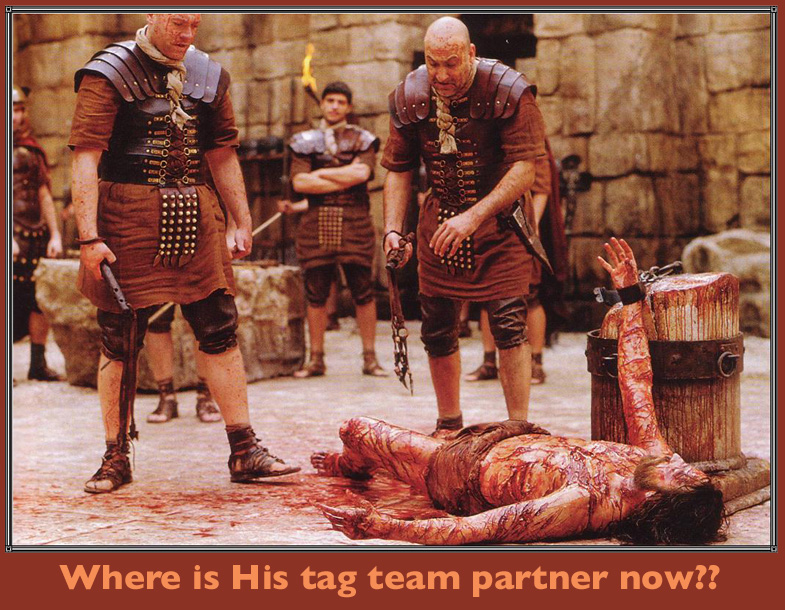

in my case the answer is because I love “His beauty is destroyed and he is forever disfigured”